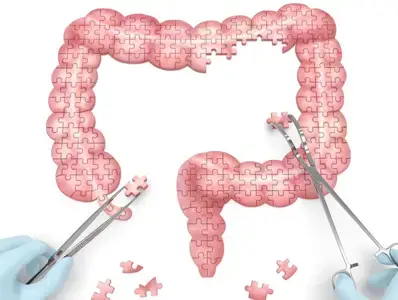[Literature library] Bovine milk oligosaccharides (MOS) support gut microbiota development and intestinal immune defense

This is the first clinical trial demonstrating a substantial rise in bifidobacterial levels with an infant formula supplemented with 7.2 g/L bovine milk oligosaccharides (MOS) alone.
Study Design
- Double blind, randomized, controlled trial of healthy-term formula-fed infants in Philippines.
- Prospective, observational companion study of human milk-fed infants (HFI) (n = 70).
Subject and Intervention
Control group (n = 112),
- Fed a formula that made of 65% intact whey protein (α-lactalbumin enriched) and 35% casein protein ratio, with carbohydrates consisting of 100% lactose, and high sn-2 palmitate oil blend (66.2 kcal/100 ml reconstituted formula).
Experimental group (n = 114),
- Fed a formula identical to the control formula except for a total of 7.2 g/L supplementation of MOS.
Study Duration
- From enrollment/baseline (0.75 months of age) to 6 months.
- Fecal samples were collected at 0.75 (baseline), 2.5 and 4 months of age.
- An oral poliovirus vaccine (OPV) was given to a subset of infants (n = 75/group) at 2 months of age.
- At 2.5 months of age, fecal samples were collected from this subset of infants.
Results
Gut microbiota composition,
- At baseline, microbiota composition in CG and EG were similar (p = 0.27), both were distant from HFI in redundancy analysis (RDA).
- Supplementation with MOS shifted the gut microbiota composition towards that of HFI.
- At 2.5 and 4 months, EG had a higher relative abundance of Bifidobacterium than that in CG (p < 0.001), which was also numerically more similar to that of HFI (p < 0.001).
- At 4 months, CG had a higher microbial diversity than that in HFI (p < 0.001), while no difference was found between EG and HFI.
- Supplementation with MOS also shifted the gut microbiota composition of caesarean-born infants towards that of vaginally-born HFI.
Pathogenic bacteria species,
- EG had Clostridioides difficile and Clostridium perfringens counts ~90% (p < 0.001) and ~65% (p < 0.01) lower than that in CG at age 4 months, respectively.
- HFI had Clostridioides difficile counts not largely different from the EG and CG with a smaller numerical difference between the means of HFI and EG than between HFI and CG.
- HFI had Clostridium perfringens counts not different from CG and higher than in EG (p = 0.01).
- Klebsiella Pneumoniae counts were not different between the EG and CG, but lower in HFI (p < 0.05 vs. both formula groups).
Fecal markers of intestinal immune and barrier function,
- Secretory immunoglobulin A (sIgA) concentration in EG was twice as high compared to CG (p < 0.001), while it was the highest in HFI (p < 0.001).
- Concentrations of α1-antitrypsin, calprotectin (both p < 0.001), elastase and myeloperoxidase (both p < 0.01) were lower in EG than that in CG, while lipocalin concentration tended to be higher in EG than that in CG (p = 0.09).
- Fecal OPV-specific IgA measured at 2.5 months was ~50% higher in the EG compared with CG [geom. LS mean (95%CI): 51 (27, 98) mg/g vs. 25 (12, 50) mg/g, p = 0.065].
- Fecal OPV-specific IgG at 2.5 months showed no difference between EG and CG [geom. LS mean (95%): 34 (13, 89) mg/g in EG vs. 59 (20, 172) mg/g in CG, p = 0.31].
Fecal pH,
- At age of 4 months, EG had around 1-unit lower fecal pH when compared to CG [Geometric (geom.) LS mean (95% CI) 5.6 (5.5, 5.8) vs 6.6 (6.4, 6.8) respectively; p < 0.01], whereas its fecal pH was just around 0.2 units higher than that of HFI [5.4 (5.2, 5.6); p < 0.05].
Organic acids,
- EG had higher concentrations of total fecal organic acids (p < 0.01), lactate (p < 0.001) and acetate (p < 0.05) than CG and comparable as in HFI.
- EG had lower concentrations of butyrate, propionate, isovalerate, isobutyrate (all p < 0.001) and valerate (p < 0.01) than CG, while these concentrations in HFI were significantly lower than in EG and CG (except for valerate which was not different between HFI and EG).
Calcium excretion,
- Calcium excretion in EG [447.3 (395.2, 506.3) μmol/g] was similar as in HFI [450.5 (380.0, 535.0) μmol/g]; both were lower than in CG [623.2 (550.3, 705.8.) μmol/g; p < 0.005].
Conclusion
By the addition of MOS to infant formula, gut microbiota and intestinal immunity of formula-fed infants can be beneficially modulated, shifting the overall microbiota composition closer to that in HFI, which may subsequently lead to a strong bifidogenic effect, and reduced opportunistic pathogens.
Link to the full report:
https://academic.oup.com/ajcn/advance-article/doi/10.1093/ajcn/nqab336/6382987
Reference:
Estorninos E et al. Term infant formula supplemented with milk-derived oligosaccharides shifts the gut microbiota closer to that of human milk-fed infants and improves intestinal immune defense: A randomized controlled trial. Am J Clin Nutr. 2021;nqab336.
Other articles that you might be interested in:
Bovine milk oligosaccharides in infant formula improves stooling pattern and sleeping episodes
WYE-EM-194-NOV-21
If you liked this post you may also like
![[Guideline summary] Updated EAACI guideline on early life food allergy prevention](/sites/default/files/styles/card_m_mobile/public/2021-04/224_Kid-grabbing-peanuts-opt.jpg.webp?itok=utr-szrE)
[Guideline summary] Updated EAACI guideline on early life food allergy prevention


Interview with Dr. Sean Austin and Dr. Norbert Sprenger: The diverse profile of human milk oligosaccharides (HMOs) and its significance in early life health outcomes

Interview with Dr. Chow Chung Mo: The management of infant feeding intolerances in clinical practice